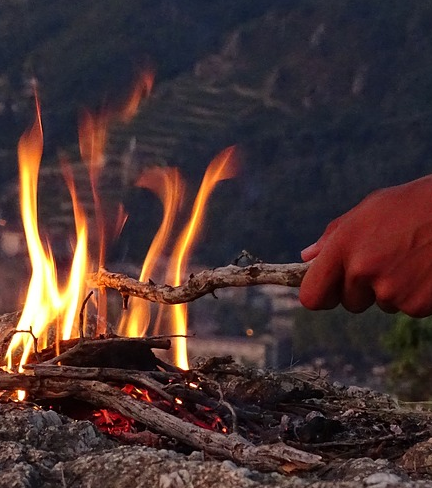3.3: Balancing Chemical Equations
- Page ID
- 51198
learning objective
- Balance chemical reactions based on reaction type
The first step is to identify reactants and products. Sometimes these will be given in the problem statement, and for certain types of problems, you will need to be able to predict the products.
Basic techniques for balancing equations
- Identify reactants and products
- Be sure to write correct formulas
- Never change the subscripts in the formulas when balancing an equation
- Read the question carefully. Problem statements may say "when molecule A is formed from the reaction of molecule B and C", and students will treat molecule A as a reactant, when it is really a product.
- Write Unbalanced Skeletal Equation
- Write Reactants to left of arrow.
- Write Products to right of arrow.
- Leave a space for stoichiometric coefficient.
- placing a line in front of each chemical is a good way to do this
\[\text{__Reacant(A) + __Reactant(B) } \rightarrow \text { __Product(X) + __Product(Y)}\]
- Identify Type of Reaction
- Single Displacement
- Balance ions not atoms (Video 3.3a)
- Double Displacement
- Balance ions not atoms (Video 3.3b)
- Strategy is pick an ion, do its counterion, then do the counterion's counterion, and repeat, until all have been balanced (watch video).
- Combustion
- Balance Carbon first, hydrogen second and oxygen last
- All other
- Balance by inspection
- If an element exists by itself, like Fe, O2, S8, balance it last.
- Single Displacement
- Check Work
Single Displacement Reactions
\[Al(s) + FeSO_4(aq) \rightarrow \; ? \nonumber\]
The trick is to balance the ions. In the following video, we do not balance Al, Fe , S and O, but aluminum and sulfate. You know from the previous section that the aluminum displaces the iron in the sulfate salt, and so you also need to be able to predict the products (aluminum and iron sulfate form iron plus aluminum sulfate)
Double Displacement Reaction
\[Al_2(SO_4)_3 + NH_4ClO_4 \rightarrow \,?\]
In the double displacement reaction the ions swap partners. As long as the same ions exist on both sides of the equation (none convert to another compound or ion) you can simply balance the ions, not the atoms. So in this video we balance aluminum, sulfate, ammonium and perchlorate, and not Al, S, O, N, H and Cl.
Combustion Reactions
Fire, the combustion reaction dates to the dawn of humanity.
 |
 |
 |
Figure \(\PageIndex{1}\): Prometheus, a Titan of Greek mythology who was credited for creating man from clay and giving him fire. This caused the wrath of Zeus who bound him to a cliff where an eagle feed on his liver every day until he was saved by Heracles. (Images public domain, left Heinrich Friedrich Füger "Prometheus Brings Fire", center Salvator Rosa' s "Torture of Prometheus" (ca. 1646-1648), right, Pixabay image)
We typically think of fire as the combustion of organic compounds as they react with oxygen to produce carbon dioxide and water, but combustion is actually a broader class of reactions where compounds react with oxygen to produce oxides and release energy. In the following video you see magnesium metal combusts, not only in air, but in water.
In this class you need to know that carbon based compounds combust with oxygen and produce carbon dioxide and water. The general unbalanced equation is
\[C_xH_yO_z \; + \; O_2 \rightarrow CO_2 \; + \; H_2O\]
In balancing carbon based combustion reactions there is a schema that makes things very easy.
- Balance carbon
- Balance hydrogen
- Balance oxygen (you may need to use a fractional coefficient)
- If you used a fractional coefficient, multiply by the denominator so all stoichiometric coefficients are integers.
The following video shows how to balance the combustion reaction for the hydrocarbon C8H18.
The next video shows an even more complicate problem, the combustion of \(C_9H_{17}O_3H\).
Practice Problems
Exercise \(\PageIndex{1}\)
Balance the following equations
- AlCl3(aq) + Na2CO3(aq) ® Al2(CO3)3(s) + NaCl(aq)
- C8H18 + O2 ® CO2 + H2O
- Li2S + Br2 ® LiBr + S
- C8H18O+ O2 ® CO2 + H2O
- Ba(C2H3O2)2(aq) + HNO3(aq) ® Ba(NO3)2(aq) + HC2H3O2(aq)
- Answer a
-
2AlCl3(aq) + 3Na2CO3(aq) ® Al2(CO3)3(s) + 6NaCl(aq)
- Answer b
-
2C8H18 + 25O2 ® 16CO2 + 18H2O
- Answer c
-
Li2S + Br2 ® 2LiBr + S
- Answer d
-
C8H18O+ 12O2 ® 8CO2 + 9H2O
- Answer e
-
Ba(C2H3O2)2(aq) + 2HNO3(aq) ® Ba(NO3)2(aq) + 2HC2H3O2(aq)
Contributors and Attributions
Robert E. Belford (University of Arkansas Little Rock; Department of Chemistry). The breadth, depth and veracity of this work is the responsibility of Robert E. Belford, rebelford@ualr.edu. You should contact him if you have any concerns. This material has both original contributions, and content built upon prior contributions of the LibreTexts Community and other resources, including but not limited to:
- Ronia Kattoum (Learning Objectives)


